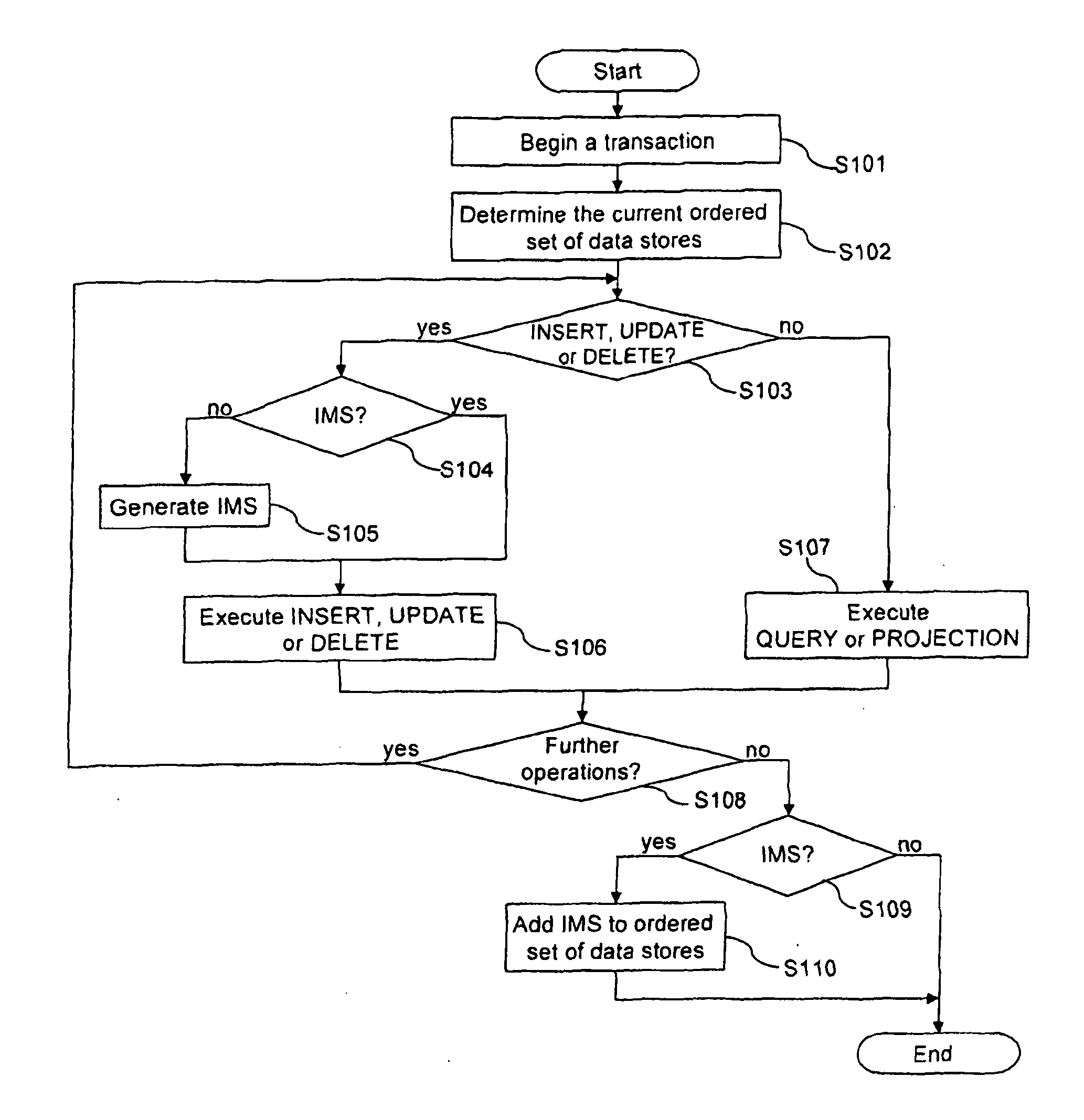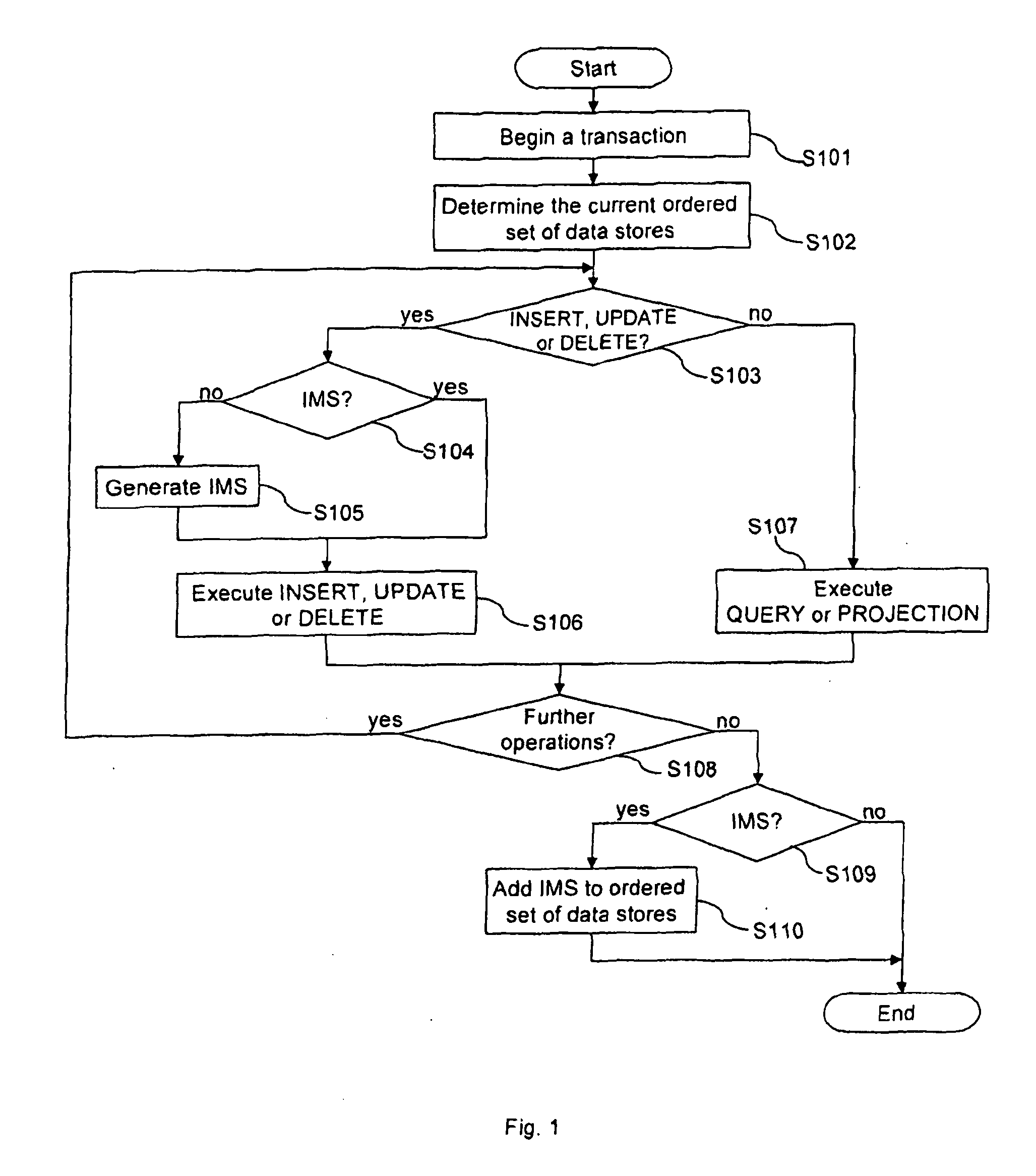Method for performing transactions on data and a transactional database
a technology of transactional database and database, applied in the field of database technology, can solve the problems of performance penalty, oltp system rdbms used with oltp system does not provide adequate support for rich flexible data models nor full text and natural language, and cannot support rich flexible data models nor transactions, so as to achieve low cost and high performance
- Summary
- Abstract
- Description
- Claims
- Application Information
AI Technical Summary
Benefits of technology
Problems solved by technology
Method used
Image
Examples
Embodiment Construction
[0087]Reference will now be made in detail to embodiments consistent with the present invention as illustrated in the accompanying drawings. Whenever possible, the same reference numerals will be used throughout the drawings and the following description to refer to the same or like parts.
[0088]The following definitions will be used throughout the description of the embodiments:[0089](1) The static data store and the modifiable data store will also be referred to as static node store (SNS) and in-memory node store (IMS), respectively.[0090](2) The index structures which are based on a non-updatable representation of an ordered set of integers according to the principle of compressed inverted indices will be referred to as ordered unsigned integer sets (OUIS).[0091](3) The ordered set of data stores in the database will be also referred to as global state.[0092](4) Identifiers will also be designated as IDs.
[0093]Furthermore, transactions according to the following embodiments may co...
PUM
 Login to View More
Login to View More Abstract
Description
Claims
Application Information
 Login to View More
Login to View More - R&D
- Intellectual Property
- Life Sciences
- Materials
- Tech Scout
- Unparalleled Data Quality
- Higher Quality Content
- 60% Fewer Hallucinations
Browse by: Latest US Patents, China's latest patents, Technical Efficacy Thesaurus, Application Domain, Technology Topic, Popular Technical Reports.
© 2025 PatSnap. All rights reserved.Legal|Privacy policy|Modern Slavery Act Transparency Statement|Sitemap|About US| Contact US: help@patsnap.com



